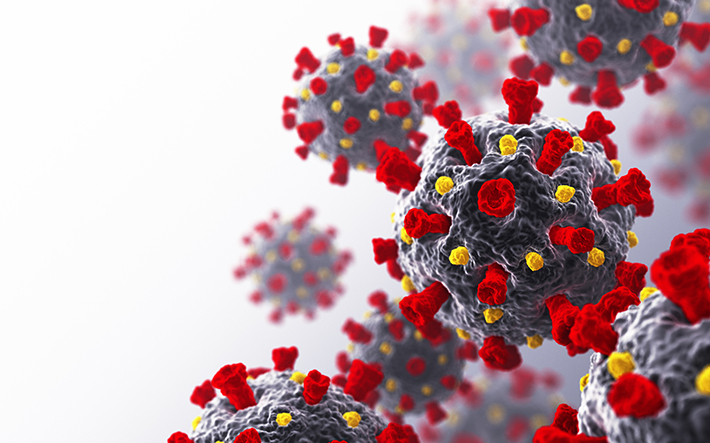
COVID-19 Changes the SDO Landscape
This year has seen unprecedented societal change in response to the COVID-19 pandemic. Many states are only now emerging from stay-at-home orders, restaurants and beaches are just beginning to reopen, and non-essential travel is still prohibited for many. In response, another sector of society has been adjusting and responding to these extraordinary changes as well: the field of standards.
Standards development organizations have stepped up with new guidance and even revised standards in response to the new realities faced by individuals, businesses, and governments. Perhaps not surprisingly, some of the industries that have been most dramatically affected by the pandemic are those in which business is conducted in person. However, they are not the only ones, as the field of protective equipment is also adjusting to new realities. Here are a few examples of how ASTM International committees are taking action in this new societal landscape.
Property Assessment
With real estate buyers and sellers prohibited from accessing properties in numerous states, the committee on environmental assessment, risk management, and corrective action (E50) hosted an informational webinar in June to provide guidance on how to perform a site assessment in the absence of a physical visit. This visit is required as part of the standard practice for environmental site assessments (E1527).
READ MORE: Medical Face Masks and Protective Clothing
As part of her yearly series of informational webinars, committee member, webinar host, and task group chair, Julie Kilgore, president of Wasatch Environmental Inc., detailed the steps to take when a property cannot be accessed and reminded viewers of the tools available.
“Recently, people have been coming to me asking ‘How do I do this [comply with the standard] in the day of coronavirus?’” she says. “And what I have to remind them is that we already have a tool in place to deal with this situation.”
In the difficult days of the financial crisis, many property owners simply abandoned properties, leaving them in foreclosure and/or inaccessible. Still, Kilgore says, there were many ways to satisfy the necessary conditions. And in these current times, you may be able to take advantage of technologies that didn’t exist 10 or 15 years ago.
“Maybe you have a site manager with a smartphone walk you through some representative spaces using face time,” she says. “And you instruct them to do what you would do. You would go to the mechanical room. You want to see any floor drains, a floor sink, a janitor’s closet. Look at the boiler room and HVAC and walk through it with them together.”
If there is truly no way to access the site physically by any party involved, there are still ways to address what Kilgore calls the “data gaps,” which is really what site access limitations come down to in the end. “You document the data gap and identify what steps were taken to address the data gap. Maybe there isn’t anybody who can get in there, but you look at agency records, you talk to the owners. Maybe you have an interview with somebody, get firsthand information from somebody who’s been on that site. And you have to decide if that missing information affects your opinion.”
“It is then up to the user, quite frankly, to make the decision for themselves,” she says. “Am I comfortable moving forward with this transaction or not?”
Protective Equipment
The field of protective equipment for workers presents a different set of challenges during a pandemic. And with worker safety and human life at stake, the members of the committee on electrical protective equipment for workers (F18) decided that a wholesale revision of one of their most important standards was necessary.
Laws recently revised with input from the U.S. Occupational Safety and Health Administration (OSHA) state that all clothing worn by utility workers — and particularly linemen and electricians — be constructed of material that will not contribute to the extent of an injury during what is known as an “arc flash,” a type of electrical explosion or discharge.

How can a prospective buyer tour a facility during a lockdown? Just one of many questions SDOs are answering.
Part of the existing performance specification for flame-resistant and electric arc-rated protective clothing worn by workers exposed to flames and electric arcs (F1506) requires equipment that meets this standard to have a label attached with lengthy wording. This requirement creates an obvious clash with the small protective masks currently being worn by millions of people — including utility workers — trying to avoid contracting or spreading COVID-19.
The only solution, according to committee member Marcia Eblen, MLE Engineering Inc., was for the subcommittee on wearing apparel (F18.65) to propose a revision to the standard (WK72625) and require a briefer message on the label.
“Manufacturers were being inundated with requests from utilities to give them flame-resistant masks,” says Eblen. “And they asked us if we could reduce the amount of information required on the label for these masks. So that’s what this ballot does. It says, ‘If you want to be compliant with the standard, and you don’t want a large and bulky label inside, we came up with some critical key information that would have to be there.’”
This will make it much easier for workers to easily see which masks will and will not protect them from both the COVID-19 virus and arc flashes, says Eblen. “So when they [workers] pick it up out of a basket with a whole bunch of cloth masks and ask, ‘Is this safe to wear?.’ there is an indicator on it that tells them this is a safe one to wear.”
Textiles
In response to demand from textile producers who are looking to provide face masks that contain antiviral properties, the committee on pesticides, antimicrobials, and alternative control agents (E35) has been working to develop a new standard to evaluate the antiviral efficacy of antimicrobial agents applied to textiles.
The subcommittee on antimicrobial agents (E35.15), which has already been active in response to the current crisis by producing a list of surrogate viruses and human cell lines that may be used for COVID-19 research, is again leading the way with their draft practice for determining antiviral efficacy of textiles treated with antimicrobial agents (WK73068). While not offering a solution for full sterilization or disinfection, this proposed standard outlines an approach to testing a treated textile specifically for its effectiveness in reducing contaminative exposure. In other words, to reduce the risk.
FOR YOU: Surrogates and the Fight Against COVID-19
“Some test laboratories are using inappropriately modified antibacterial tests due to the void in guidance at the moment,” says Robert A. Monticello, Ph.D., chief technology officer with the International Antimicrobial Council and subcommittee vice chair. “This will hopefully provide guidance to the textile industry regarding the appropriateness and effectiveness of certain potential antiviral products used on textiles.”
The E35 committee plans to continue looking for ways to help society respond to the COVID-19 crisis in the future. “We will continue to work to improve this standard and can use it as the foundation for the development of further practices, which may reflect other end-use exposure scenarios,” says Monticello.
And More
Other areas of the standards world are also weighing different actions in response to the pandemic. Although no formal actions are currently underway in the form of revisions or guidance from the committee on personal protective equipment (F23), they will no doubt have many different issues to consider in coming months.
Already thrust into the spotlight recently and receiving worldwide media coverage as the committee that oversees the specification for performance of materials used in medical face masks (F2100), F23 has begun looking at ways to respond.
In May, the committee put out a “call to action” to its membership asking for feedback on existing standards that may need to be revised due to the pandemic, as well as suggestions for new standards that they could begin work on immediately.
Looking Ahead
As with any event that reshapes society, the effects of the COVID-19 crisis will continue to be felt for months and possibly years to come. As governments begin to slowly reopen their societies around the world, the field of standards especially will need to be nimble and adaptable in order to meet evolving needs post-COVID-19.
Some of the guidance that will be needed in the future cannot even be envisioned at the moment, but the possibilities are endless. Fields from aerospace to manufacturing may need to rethink various aspects of their foundational standards going forward, and ASTM’s committees are prepared. ■
 SN Home
SN Home Archive
Archive Advertisers
Advertisers Masthead
Masthead RateCard
RateCard Subscribe
Subscribe Email Editor
Email Editor